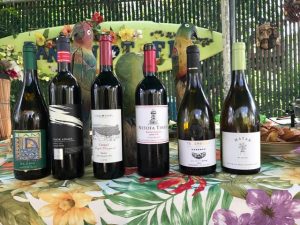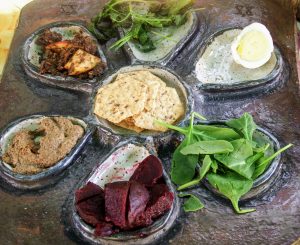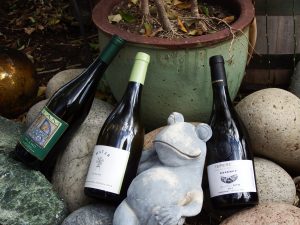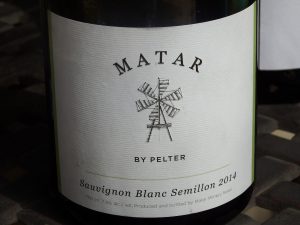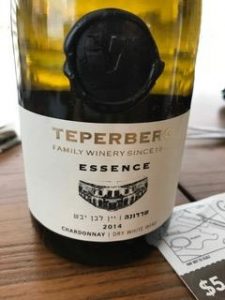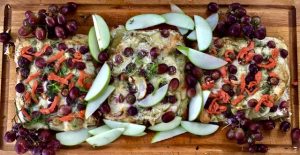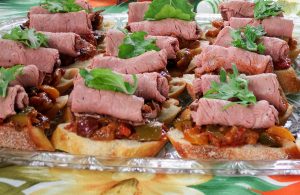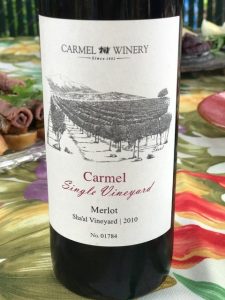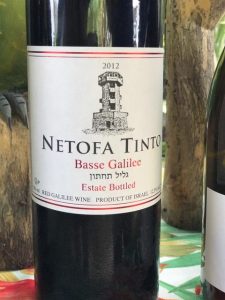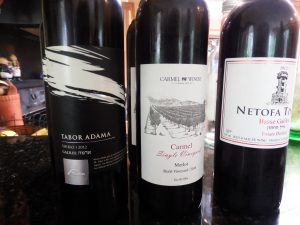Just in time for Passover, the Wine Review Council met to review a variety of Kosher wines from Israel.
What is a kosher wine? The best description is a wine that has been produced, handled and supervised from the beginning by Orthodox Sabbath Observant Jews. Many people will tell you that the wine must be boiled (mevushal) to make it kosher, but that is just not the absolute fact. Some wineries do put their wine through this flash heating but it is not mandatory.
The Passover Seder is a Jewish ritual feast which marks the retelling of the liberation of the Israelites from slavery in ancient Egypt. It is based on the Biblical verse commanding Jews to retell the story of the Exodus from Egypt “You shall tell your child on that day, saying ‘It is because of what the Lord did for me when I came out of Egypt’”. (Exodus 13:8) Families and friends gather in the evening to read the text of the Haggadah, offer special blessings and ritual, drink four cups of wine, eat matzah and symbolic foods placed on the Passover Seder Plate.
There are 6 foods on a Pesach (refers to the Paschal lamb sacrificed in honor of the festival)plate:
- Roasted egg– a symbol of mourning, for the loss of the Temple in the year 70 C.E., also the symbol of spring
- Apple, nuts and spices -ground together an mixed with wine are symbolic of the mortar used by Hebrew slaves to build Egyptian structures
- Bitter Vegetable– from the commandment in Numbers 9:11 “eat the paschal lamb with unleavened bread and bitter herbs”
- Vegetable dipped into salt water – the salt water represents the tears shed during Egyptian slavery. The dipped vegetable as an appetizer, signifies the slaves marking their doorposts at the time of the first Passover.
- Bitter Herbs – usually horseradish this symbolizes the bitterness of Egyptian slavery
- Shankbone – symbolic of the Paschal lamb offered as a sacrifice, vegetarians use beets, to symbolize the blood of the lamb
While we didn’t pair our wines with any of these foods, it was a great historical lesson to pair with the kosher wines.
Israel is on the same latitude as San Diego thus many of the grape varietals grown there are similar.
The first wine was a 2014 Flam, an unoaked Blanc (Chardonnay and Sauvignon Blanc). Paired with a Frittata of spinach, potatoes, and leek this crispy white wine was light with citrus peel, lemon and apple flavors. I would call this a summer patio wine.
Also paired with the Frittata was a very interesting 2014 Matar by Pelter Sauvignon Blanc/Semillon. This wine is alluringly fragrant with all sorts of fruits: peach, lemon curd, citrus and Granny Smith apples. We were all stumped with the food pairing for this wine. The group decided the better option would be a lemon tart, lemon sorbet or a pomegranate sorbet.
My favorite wine of the line-up went to the 2014 Teperberg Essence Chardonnay. The wine had gone through malolactic fermentation and had a small amount of oak aging giving it the butter and nutty aromas, yet acidic and ripe fruit on the palate. It paired perfectly with a gluten-free pizza with an Alfredo sauce base topped with apples, grapes and fennel. Definitely a winner.
When we moved on to the reds we were surprised to taste a 2010 Carmel Winery Merlot. This winery has history! Founded in 1882 by Baron von Rothschild, the owner of Chateau Lafit Rothschild. Sha’al Vineyard is located south of Tel Aviv in the Upper Galilee at 1700 meters elevation, the vineyard boasts a volcanic soil and cool climate wines grow well here. This winery produces 15 million bottles of wine a year! Fortunately they have a deep underground cellar to store their wines. This wine was first aged in stainless steel and then transferred for 10 months into oak barrels. I would consider the wine Old World Bordeaux style.
Another favorite was the unique blend of Tempranillo and Touriga (60% Touriga, 40% Tempranillo), this 2012 Netofa Tinto, comes from the Galilee Region. The vineyard is planted along the slopes of the denuded Mt. Tabor. This unique location gets the climate from the Sea of Galilee on one side and the Mediterranean Sea on the other side. Approximately 400 types of grapes thrive in this area. This blend was paired with a Paella which was able to stand up to the strong tannins of the Touriga. It was a medium-bodied wine with a palate of blackberries, tart cherries, licorice, peach apricot plus tobacco, coffee and oriental spices. A very unique and highly tasty wine, it was loved by everyone.
The last wine of the day was a 2012 Tabor Adama Shiraz. This wine also comes from the Galilee Region and enjoys the same unique climate from the Sea of Galilee on one side and the Mediterranean Sea on the other side. This rich wine was aged for 1 year in oak and has pepper and clove spice smell. As is typical with Israeli Syrah, the fruit of the grape was fragrant but also balanced, with chocolate and cedar smells. The acid was strong at the end but the tannins helped to round out the flavor and create a smooth tasting wine.
These wines were graciously donated by Royal Wine Corp. You may find them at http://www.royalwine.com/. Enjoy hundreds of wines that they import to the USA. It’s worth it to try these wines and enjoy the differences yet similarities of the wines. And, as wine drinkers know, we love a good story! And this is a good one.


